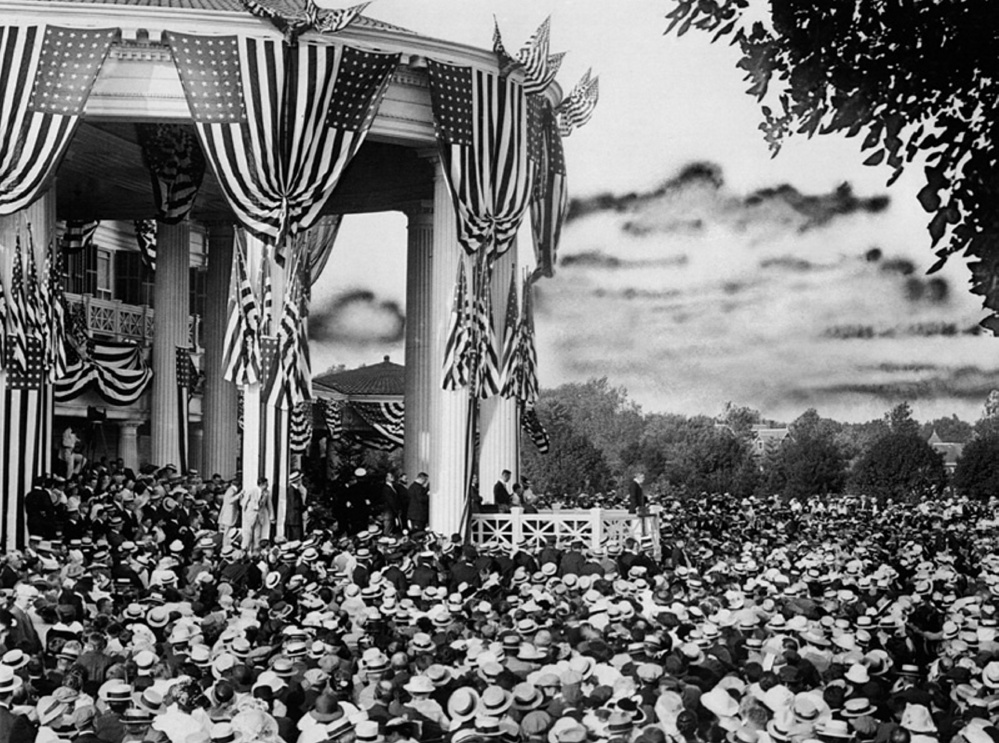The presumptive Republican and Democratic presidential nominees are in place for the November election. The upcoming contest provides a fascinating contrast with another highly consequential election: the 1916 contest between Democrat Woodrow Wilson and Republican Charles Evans Hughes. That election would be followed by the entry of the United States into what we know as World War I.
The 1916 election was shaped by the election of 1912, when Woodrow Wilson interrupted a Republican dominance of the presidency that dated to Abraham Lincoln. In 1912, Wilson had the good fortune to face a split Republican Party, which renominated incumbent President William Howard Taft over his predecessor, Theodore Roosevelt. Roosevelt then ran as a Bull Moose independent. Wilson let the Republican Party divide its votes and won an easy Electoral College victory.
In 1916, both reunited Republicans and Wilson Democrats anticipated victory. Wilson was re-elected by one of the narrowest margins in history.
The issues of the 1916 campaign bear a fascinating likeness to issues of the 2016 campaign. Five stand out:
• The import of foreign goods. Republicans in 1916 favored a substantial tariff on foreign imports to protect competing American businesses and their workers. Democrats favored low tariffs, to protect American consumers of those goods and American exporters. In 2016, global trade remains a potent issue, with various trade agreements being hotly debated.
• Labor-management relations. In 1916, Republicans generally opposed the labor movement as harmful to business and the economy. They criticized President Wilson’s support by organized labor. The eight-hour workday was a potent issue. Today, the fight for greater income equality, higher minimum wages and parental leave similarly divides the parties.
• Foreign and military policy. The question in 1916 was: What position should neutral America’s take in regard to the world war, then in its third bloody year?
Hughes, the Republican candidate, and Roosevelt favored stronger support of the British and French Allies against Germany and other Central Powers. Almost by accident, President Wilson discovered that the slogan “He (Wilson) Kept Us Out of War” was an electoral winner with many Americans, who were ambivalent in their feelings about the European combatants, fully aware of the horrible death toll on the battlefield and pleased with neutral America’s profitable role as supplier of food, war materials and loans to the Allies.
In 2016, the U.S. continues long wars in the Middle East and diplomatic, and possibly military, challenges from China, Russia and North Korea.
• Immigration. A considerable percentage of the 110 million people who lived in the U.S. in 1916 were first- or second-generation immigrants, primarily from Europe. The loyalties of those immigrants raised difficult questions. Nine million of the “new Americans” came from Germany or the Austro-Hungarian Empire, the heart of the Central Powers. Barely 250,000 came from France, the most prominent of the Allies. In 2016, immigration remains divisive.
• Discrimination and equality. Discrimination against African-Americans was longstanding and vicious in 1916. Legal segregation and lynch mobs defined black lives in the South. Less brutal discrimination marked black lives in the rest of the nation. Immigrant groups and long-standing citizens, including Native Americans, also faced discrimination based on race, religion and national origin.
Despite significant gains in the last century, discrimination remains a central issue in American politics and society. The Black Lives Matter movement, the access of transgender Americans to public bathrooms and treatment of Muslim citizens and immigrants will likely be featured in the 2016 election.
Bias in 1916 did not end with racial, religious and ethnic minority groups. U.S. law had yet to extend the right to vote to women nationwide. The presidential candidates in 1916 backed their party platforms, which left women’s suffrage to a state-by-state decision.
Today, while women have the vote, glass ceilings, wage gaps and reproductive health issues continue to create political and social tensions in the first presidential race to feature a female presumptive presidential nominee from a major party.
These five issues would shape the 1916 election. The results and the American participation in the world war that followed the election would redefine America. The experiences of the war continue to shape the America that will contest the 2016 presidential and congressional elections.
Send questions/comments to the editors.


